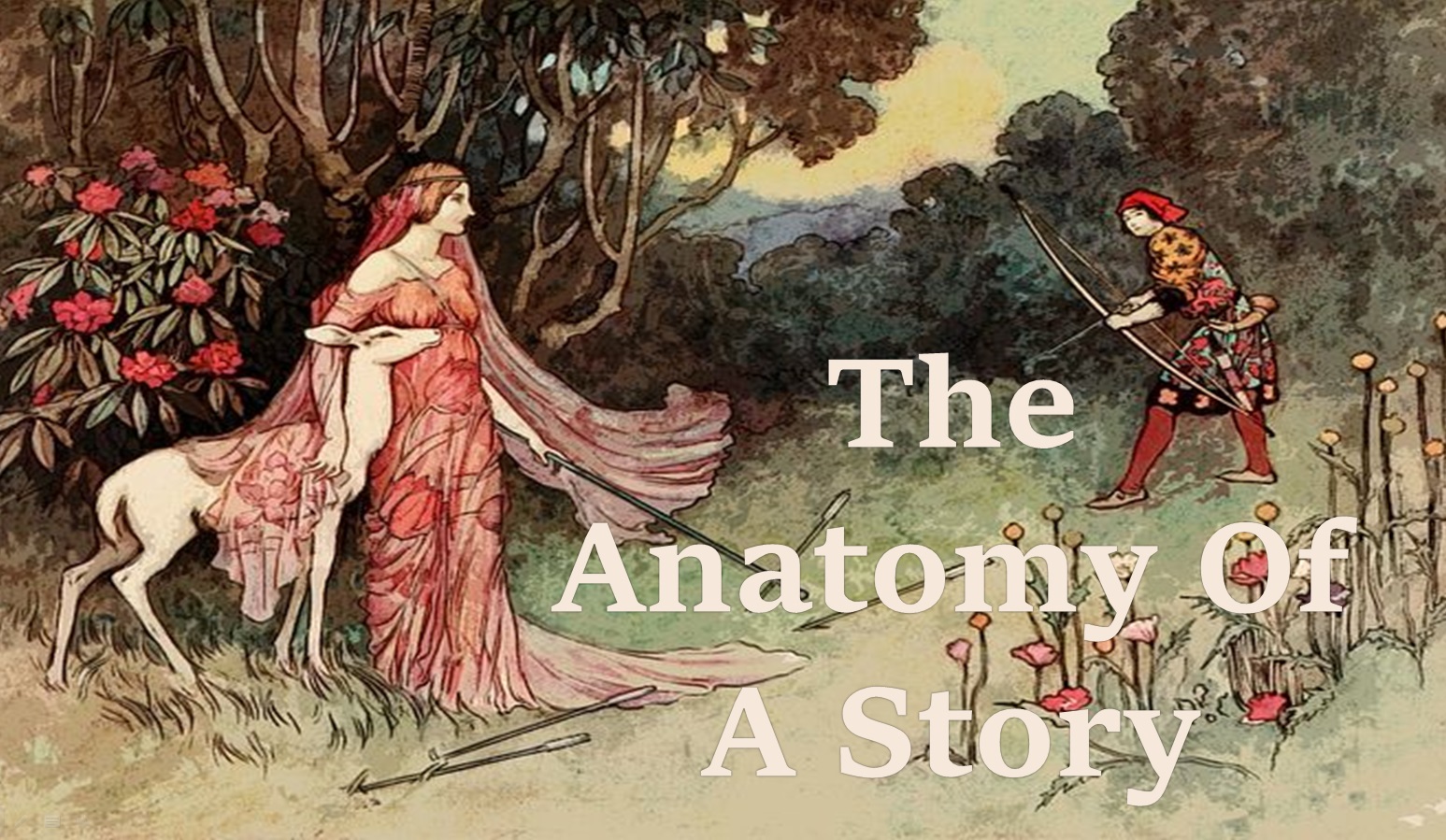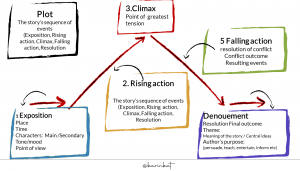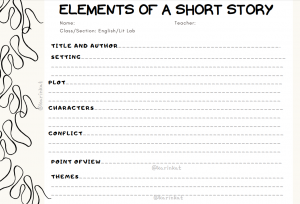What is a story? What is it made up of? A story always has the same structure: beginning, middle, end. But is that all?
There are certain elements that make up a story; always. Otherwise, there is no story at all, at least not a good story worth telling,,,, let alone reading.
We’re going to talk about: the basic elements of a story, the more advanced elements of a story , and , in between, we’ll discuss the elements that make up the plot of a story.
1.The Basic Elements of a Story
1.Setting: Where and when is the story set? The setting represents both the physical location and the time (i.e. past, present, future) as well as the social and cultural conditions in which the characters exist. The setting gives us the background of a story, brings images to mind, determines the tone or the mood.
Details can describe the time of day the time of year, even the time in history. They also describe the scenery, the weather, and of course location.
2The second element of a story is the character -- The character can be a person, an animal or a thing.– really, anything personified. ---There can be one main character or many, and often there are secondary characters, but not always.
3. The third element of a story is the Plot: The events that happen in a story are called the plot. In a plot, you typically find the introduction, the rising action,the climax, the falling action, and the resolution. The plot is often represented as an arc.
4. As the story evolves in a rising way there comes another element: the Conflict: Every story must have a conflict, i.e. a challenge or problem around which the story is based. Without conflict, the story will have no purpose or trajectory. That is, starting somewhere and ending somewhere.
5. Every story has a Theme: By Theme, we mean a central Idea, or a belief, or even a moral, a lesson, or insight. It’s the central argument that the author is trying to make the reader understand. The theme is the “why” of the story. Why do we write a story? What do we want to communicate with our words and even between the lines sometimes?
6. The plot, itself being an indispensable ,sine qua non, basic element of a story, is made up of its own elements. These are the steps that make the series of events roll. ----Remember when we said no plot, no story? --- So,, what are these elements that make up a plot? The Arc here shows these elements. But Let’s get to know them in detail.
2.The Advanced Elements of a Story
7. Point-of-view: There is no story unless somebody tells it, right? A story exists thanks to its narrator.-- The point-of-view is “Who” is telling the story? Is it a: ----First-person narration? (“I”) Or is it a
third- person (“he/she/it”) point of view of events ?.
The point-of-view can be
Limited (that is, the story is told from one character’s perspective), or
multiple (many characters’ perspectives, the same story or event narrated by different persons/characters ) or
omniscient ( the all knowing narrator).
Second person ("you") is not often used for writing stories.
8. Tone The overall emotional feeling of the story is the tone of the story .-- How does the story make you feel? Is it happy, funny, sad, or depressed? The Tone can be portrayed in many ways, through the choice of words and use of grammar, the choice of theme, the imagery and description, the symbolism, and the sounds of the words in combination (i.e. rhyme, rhythm, musicality).
9.Style: This is how things are said. It’s the language we choose to use to tell a story. The choice of words, the sentence structure, the dialogue, the use of metaphor, the simile. Style is all about the language used to narrate a story.
5 Essential Elements Of The Plot
- Exposition/Introduction: In the exposition stage of the plot of a story, the setting,, and characters (especially the main character, known as the protagonist) are introduced, as well as the main problem, the conflict or goal of the story.
- Rising Action: After the exposition or introduction, events start unfolding and things rolling The rising action stage involves an inciting incident. The inciting incident pushes the plot into motion, upwards, events begin to build up, the protagonist takes action, and the storyline becomes more complex. During this phase, there is often a sense of tension.
- Climax: The climax is the turning point in the plot of a story. It involves a “climax” (hence the name) the peak of events - and the central struggle. The protagonist faces the main challenge which will eventually lead to the outcome or goal of the story. Typically, this is the most emotional part of the storyline and it often involves the most action.
- Falling Action: Well, just like things and events can’t be forever rising, they also can’t stay at the peak for long , During the falling action stage, the action winds down, loose ends get tied up, events are resolved and we learn the results of the protagonists’ actions.
- The last phase in the rolling of events is the Denouement( that is, the Resolution /Conclusion): In the denouement stage, the goal is resolved and the conflict ends ( the ending could be positive, negative, or neutral). The “denouement” is the end of the story.






